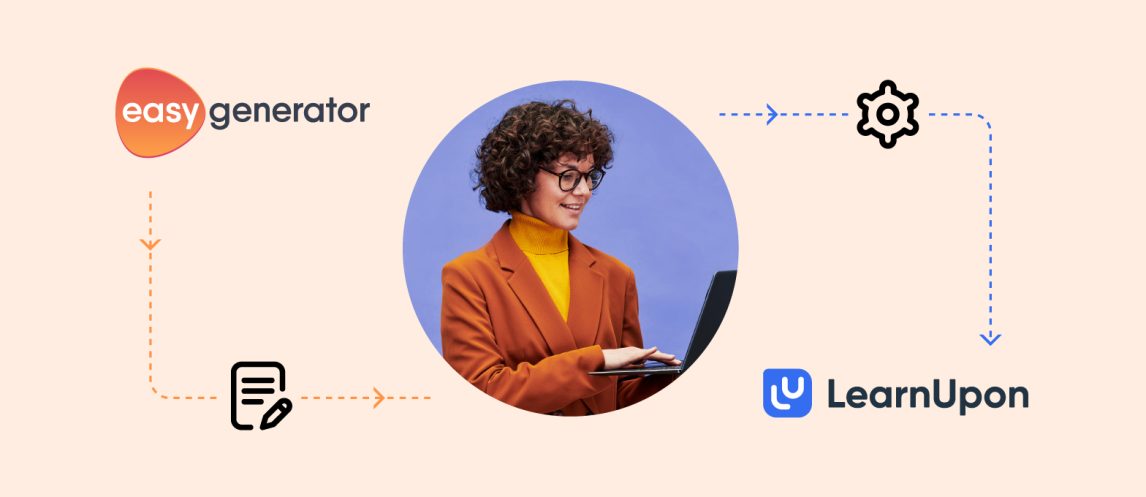
7 min reading time
How to Create Engaging Member Training
Across the endless variety of different organizations and associations, all have one thing in common: their success often hinges on member engagement. While this crucial factor is connected to many different variables, one of the most impactful ways to positively impact member engagement is through member training.
To deliver a positive return on investment, your member training needs to be optimized to maximize value and engagement — otherwise your efforts may not be a success. So, let’s look at specific ways that your organization can make sure your training is as valuable as possible, and what tools can hep you to unlock a higher degree of member engagement.
Understanding Member Training
Member training refers to the process of training members of a particular group. This training is designed to enhance their skills, knowledge, and expertise related to their roles or interests within the organization. Member training programs are common in various sectors and can cover a wide range of topics, such as skilling, role-based training, compliance, and diversity training. Effective member training can play a significant role in an organization’s growth, retention rates, and the engagement of its members.
Traditional training methods often lack the scalability and interactivity required to deliver on the potential impact that groups want to achieve. What’s more, conventional training typically falls short in its ability to customize the experience to each learner. All this adds up to an unengaged audience.
Ultimately, you want your training to increase your retention rates, curb churn, increase new membership and revenue generation and enhance your reputation, advocacy and member’s knowledge.
Learner-centric training stands in opposition to traditional training methods, in that it prioritizes the learning preferences and needs of those participating in a training. Putting the learner first increases the motivation and enthusiasm of learners, leading to more impactful results.
Creating Engaging Content
Learning content needs to be well-designed, and directly connect to the needs and interests of your members.Know the goal
When creating and building any course, it’s always good practice to keep the goal of the training in mind. Knowing this is critical to peak the interest of the learner, but for a course builder, it’s essential to have the goal top of mind too.
To keep your course on the right path, stay focused on the goal and be ruthless about what you include. If something within a course doesn’t pertain to the goal, then dump it or create a separate course on that subject.
Think about structure
Throwing everything into one course isn’t always the right course of action. In practice, a much more effective approach is to have a straightforward structure that is appropriate for both the learner and the content. When planning out your course, ask yourself this question: What is the content and how is this course going to be consumed?
Let the content of the course and the situation of the learner dictate the structural design. For some subjects, they’ll suit an easily digestible, micro-learning format that breaks a topic into multiple bite-sized parts. Others will need a full 30-minute, dynamic structure that gives plenty of context and your learner sitting at their desk, undisturbed.
Put yourself in the learners shoes during content creation and let that inform your course design. Lauren Davenport, Senior Manager of Education and Training at USA Football, sums this up perfectly:
“At the end of the day, whether it’s a certification or education, I’ve learned through teaching and experience. I always ask myself if a coach had practice today, did our certification or education help them? So that kind of helps me narrow in from the big theory of it all.”
Tools for more engaging content
If you’re using a learning management system (LMS) try to make use of the interactive elements. After all, the most engaging courses mix and match content to make the most dynamic experience possible. Create reusable course templates on your LMS. You can do the same with your chosen authoring tool. In our experience, it’s easier to test what works and what doesn’t – enabling you to make changes to courses effortlessly.
Develop a culture of learning
Culture is almost like a silent code of conduct; a secret system that drives motivation and behavior. Similarly, learning culture supports behaviors that value and encourage engaged learners. As Amanda Kizer, Principal Consultant at Zendesk put it:
“Learning culture weaves the learning into the very fabric of the company. It’s not a box to be checked, it’s a strategic pillar across the organization.”
Member retention and increased engagement all interlink with your learning culture. This suggests that a learning culture not only leverages training to grow members as advocates, individuals and leaders, but that same culture is crucial to achieving the organization’s growth and retention goals.
Tools for developing a learning culture
To make learning programs more appealing and engaging, organizations are increasingly relying on LMSs with social learning capabilities. An LMS that seamlessly engages learners through social learning enhances the learning experience and drives continuous engagement.
By facilitating communication through an LMS forum, it creates a space where learners can support and learn from each other. It also acts as a repository for learners to search for and find additional training information. It’s an excellent tool for fostering your company’s learning culture.
If you don’t have access to an LMS, try sharing relevant resources with your members through email. This will contribute to a sense of culture and add value to those in your association. Lauren Davenport, Senior Manager of Education and Training at USA Football, shared this insight with us in a recent webinar:
“We have practice plans, templates, games and skill resources so coaches don’t feel like they also have to reinvent the wheel to get onto the field. We continue to give them value even after they’re certified.“
Implementing Learner-Centric Strategies
One effective way to make sure that your training aligns with the members of your association or organization is through the use of “learner personas.” These personas are fictional representations of the interests, goals, and interests of your members. Your learning efforts will likely include several different personas, like long-term and brand new members, for example. By identifying the different personas you are trying to reach with your training, you can make sure that you are aligning with their needs and existing knowledge.
Personas can also be helpful in creating personalized learning paths, which extends the concept of learner-centered training beyond individual courses and into a robust, multi-course curriculum. This delivers an even greater level of learner personalization, which translates to engagement.
LMS’s also unlock the opportunity for adaptive learning, which further improves the learning experience by using data about each learner to customize it according to their needs. Adaptive learning goes takes personalization to a level that’s only possible using data and machine learning.
Measuring Engagement and Success
As with all training, it’s important to anchor your efforts to measurable metrics. We recommend tracking both engagement, as well as reach. Engagement measures the percentage of members interacting with training, and reach lets you know the number of members seeing your training. Both of these metrics are helpful in capturing overall the size of your training audience, and the percentage that is actively interacting with your training content. Lauren Davenport, Senior Manager of Education and Training at USA Football shared with us some of the success metrics that she uses:
“How long did they spend in the course, how long did it take them to complete it, how many times are they in LearnUpon, how many times are they going back to it? These are just some of the user engagement metrics we use.”
Beyond metrics, feedback surveys and assessments are extremely valuable in evaluating the effectiveness of an organization or association’s learning program. By combining qualitative data with quantitative data, you can get a fuller picture of where your training is connecting members, and where it might need to be improved. Christie Wereski, Assistant Director, Curricular Innovation, Chicago Association of Realtors, gave us some insight into how they gather qualitative data:
“We talk to different departments and we find out where people are struggling. So if it’s with a code of ethics or if they’re getting called in for different violations, we try to craft those into our products.”
Leveraging LearnUpon for member training
An LMS, or learning management system, is the modern alternative to traditional learning technology. An advanced LMS is essentially a toolbox filled with all the components you need to create an engaging member training, and it’s up to you to customize the experience to best suit the needs of your learners.
Learning management systems like LearnUpon allow you to offer training on-demand, and keep members informed about new courses and content with email notifications. LearnUpon also offers fun gamification features, which can be a highly effective way of increasing member participation. And because LMS’s allow the opportunity to include various forms of learning content, organizations and associations can utilize video webinars and member forums to take engagement to the next level.
Additional features that differentiate a modern LMS include:
- Optimization for phones and other mobile devices
- Easy course building
- ILT (instructor-led training) offerings for hosting events
- Group assignments with dynamic rules to separate learning groups between different audiences and locations
- The ability to awards certifications and credits
- eCommerce for monetizing courses (and also to offer member discounts)
- Access to APIs and Webhooks to maximize integrations with other platforms used by organizations/associations
Member training and the resulting engagement has the potential to be the lifeblood of any organization, but that requires a training program that is customized to the needs of the members, and incorporates a variety of interactive elements to engage learners throughout the process. LearnUpon’s learner-centric solution was built to do just that, and is the easiest, most impactful solution for enhancing association training programs and fostering member growth.
Learn more about all the ways LearnUpon can take your member training program to the next level.




